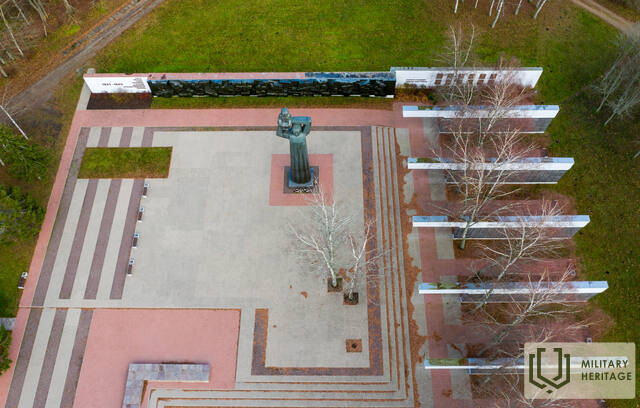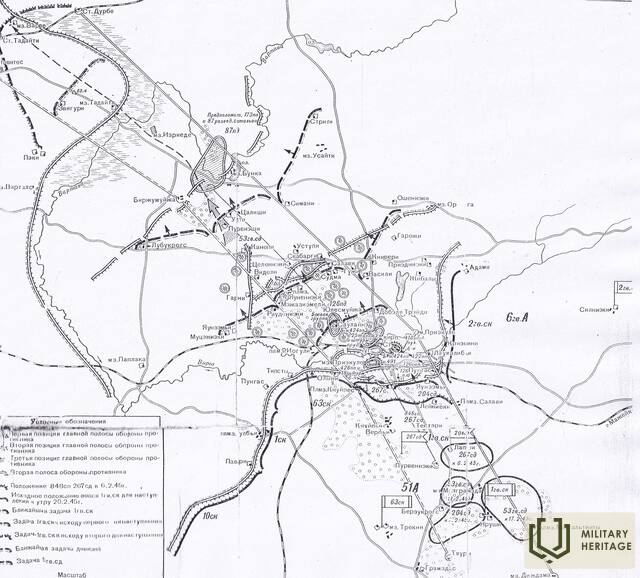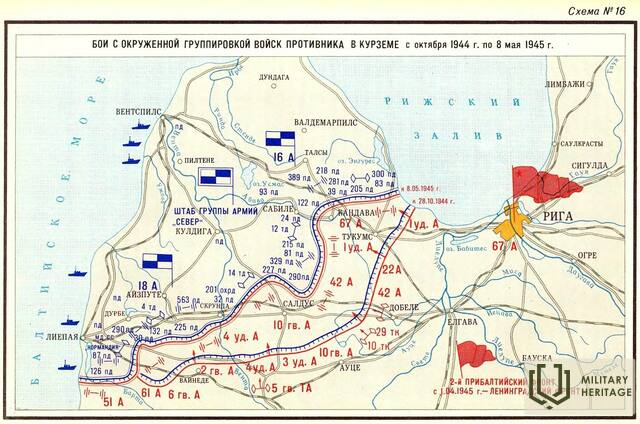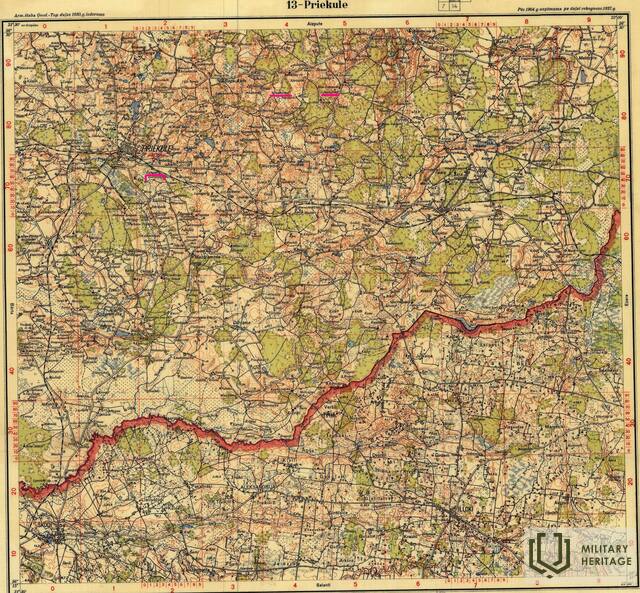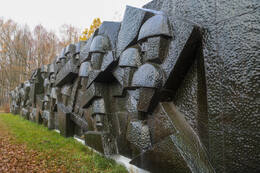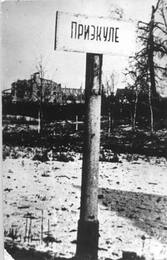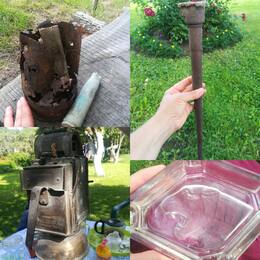„Karas nesibaigia, kol nepalaidotas paskutinis kareivis“ (Priekulės brolių kapinės)
Kuržemė kaip atskiras ir izoliuotas mūšio laukas tapo 1944 m. spalio 10 d. Apie 500 000 vokiečių kareivių buvo laikomi apsuptais. Remiantis 1-ojo Baltijos fronto štabo pranešimais, norint visiškai išlaisvinti visą Baltijos pakrantę, reikėjo tik „nedidelių pastangų“. Tačiau kovos Kuržemėje tęsėsi dar septynis mėnesius ir Kuržemė tapo Antrojo pasaulinio karo pabaigos simboliu.
Per septynis kovų mėnesius iki 1945 m. gegužės mėn. Vokietijos ginkluotosios pajėgos Kurše neteko 154 108 žuvusių, sužeistų ir dingusių be žinios kareivių, o Raudonosios armijos nuostoliai siekė apie 400 000 žuvusių, sužeistų arba dingusių be žinios kareivių.
Didžiausias Raudonosios armijos karių kapų memorialas
Susijusi laiko juosta
Susijusios temos
Susijusios vietos
Priekulės karių kapinių memorialinis ansamblis
Priekulės karių kapinių memorialinis ansamblis yra Liepojos-Priekulės-Skodos kelyje ir yra didžiausia Antrojo pasaulinio karo sovietų karių laidojimo vieta Baltijos šalyse. Čia palaidota daugiau nei 23 000 sovietų karių. Operacija „Priekulė“ buvo vienas įnirtingiausių mūšių Kuržemės tvirtovėje, vykęs nuo 1944 m. spalio iki 1945 m. vasario 21 d. Priekulės mūšis 1945 m. vasarį truko septynias dienas ir naktis be perstojo ir pareikalavo daug aukų abiejose pusėse. Iki Priekulės karių kapinių pavertimo memorialu čia buvo pastatytas paskutinis iškilaus latvių skulptoriaus K. Zālės (1888–1942) paminklas, skirtas Alojos nepriklausomybės kovoms atminti. Nuo 1974 iki 1984 m. 8 ha Priekulės karių kapinės buvo paverstos memorialiniu ansambliu, skirtu Antrojo pasaulinio karo žuvusiems. Jį suprojektavo skulptorius P. Zaļkalne, architektai A. Zoldners ir E. Salguss bei dendrologas A. Lasis.
Memorialo centre stovi 12 m aukščio statula, vadinama „Tėvyne“, o žuvusiųjų vardai iškalti granito plokštėse. Iki Latvijos nepriklausomybės atgavimo Pergalės diena buvo plačiai švenčiama kasmet gegužės 9 d.




